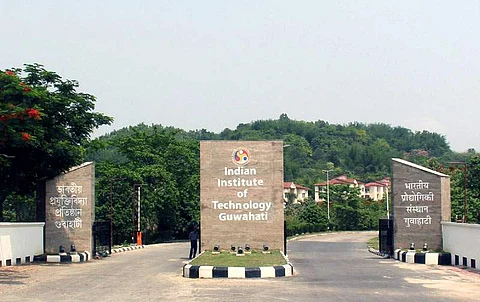

Researchers at the Indian Institute of Technology Guwahati (IIT-G) are developing novel materials that can use sunlight to split water into hydrogen and oxygen. The materials are much cheaper than the currently used 'noble metals', leading to cost-effective solar-powered hydrogen generators. The cherry on the top is probably the fact that they are also paving the way to a carbon-free hydrogen economy.
While the commonly known 'solar cells' convert light directly into electrical energy, there is another type of sunlight-powered energy conversion system called 'PhotoElectroChemical' (PEC) cells that have elicited attention in recent times due to their direct production of fuels in a combination with electrical energy.
PEC cells use solar energy to split simple and safe compounds such as water into hydrogen and oxygen, hydrogen being a high-energy fuel that can be stored and used as needed. However, these PEC cells run into problems with the need to use catalysts to counter the sluggishness of the water-oxidation process. These catalysts such as platinum, iridium and ruthenium don't come cheap and therefore create a dent in the practicality of the PEC cells.
The team at IIT Guwahati has developed non-noble metal catalysts that are as good as the expensive metals in splitting water into PEC cells. "We have developed a ternary catalyst that comprises cobalt-tin layered-double hydroxides (LDH) and bismuth vanadate, which forms a p-n junction semiconductor with graphene bridges, and have shown that the catalyst, when used as a photoanode, is able to split water easily to produce hydrogen and oxygen," said lead researcher Dr Mohammad Qureshi, Professor, Department of Chemistry, IIT Guwahati.
Graphene siphons the holes away from the vanadate and transports them into the cobalt-tin LDH, thus preventing their recombination with the electrons. The holes and the electrons are now available to split the water into hydrogen and oxygen. The findings were published in the American Chemical Society's Journal of Physical Chemistry Letters.
